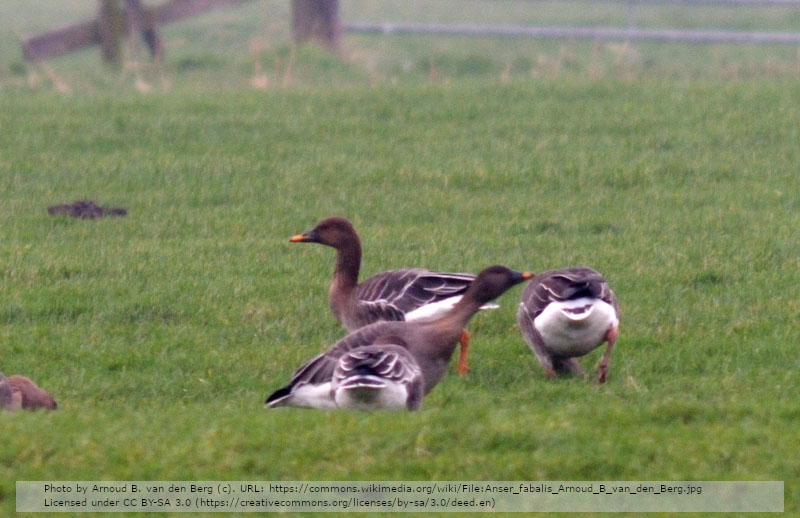The roost-feeding area complex of Taiga Bean Goose Anser f. fabalis in the Ume River Delta Plains, Sweden—foraging patterns in comparison with Greylag Goose Anser anser, Whooper Swan Cygnus cygnus and Eurasian Crane Grus grus
DOI:
https://doi.org/10.34080/os.v15.22742Keywords:
Anatidae, staging sites, stopover sites, foraging ecology, anthropological effects, agricultureAbstract
In spring 2004, numbers of staging Taiga Bean Goose Anser f. fabalis, Greylag Goose Anser anser, Whooper Swan Cygnus Cygnus, and Eurasian Crane Grus grus were counted at the roost and at feeding grounds in and adjacent to the NATURA 2000 site Ume River Delta and Plains, Umeå, Sweden (SE0810475). For the Taiga Bean Goose a significant, negative relationship was found between total feeding time and the distance to the only roost. The most attractive feeding sites were stubble and non-harvested fields on moist or inundated soil within 2 km from the roost. The geese chose fields to minimize flight distances and disturbances from human activities. The Whooper Swan showed similar preferences as the Taiga Bean Goose, but it showed even a higher preference for inundated fields close to the roost. The Eurasian Crane showed a higher preference for the large central area of the plains, likely because of its sensitivity to disturbance. The Greylag Goose showed a very different foraging pattern with a greater preference for dryer uplands with cut hay fields.
Downloads

Downloads
Published
How to Cite
Issue
Section
License
The copyright of each contribution belongs to the author(s), but all contributions are published under a Creative Commons license, so that anyone is free to share and reuse the contribution as long as the copyright holder is attributed.







